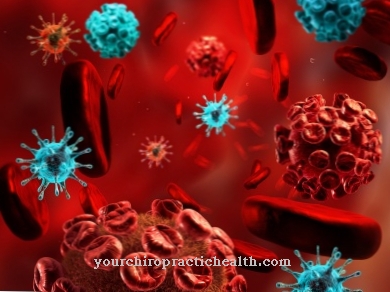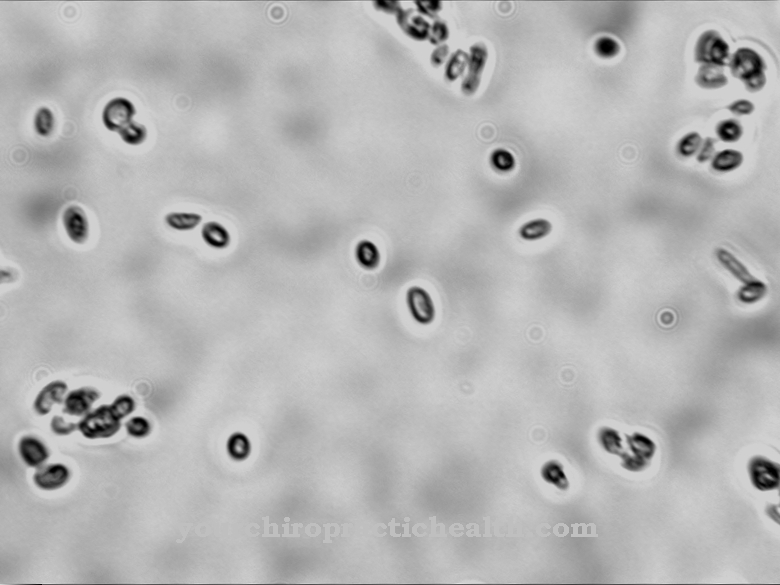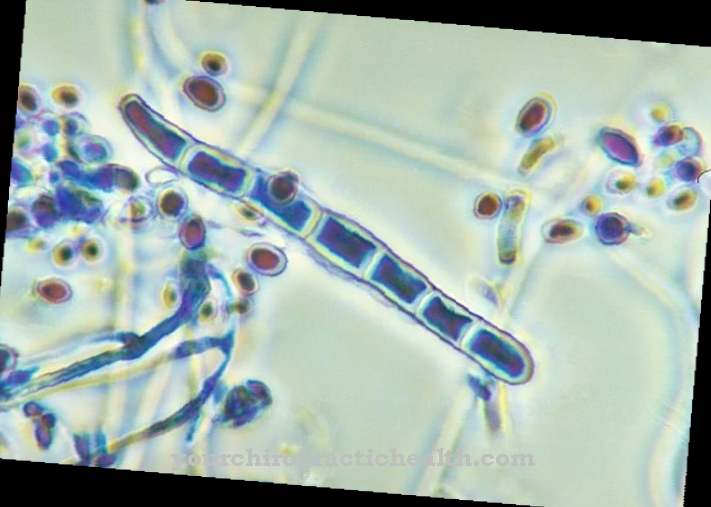Trichomonas vaginalis belongs to the protozoa and is the causative agent of trichomoniasis. Women and men can become infected with trichomonads through unprotected sexual intercourse.
What is Trichomonas vaginalis?
Trichomonas vaginalis is a parasite. This means that the small organism uses humans as hosts, feeds on them and colonizes them for reproductive purposes. Trichomonas vaginalis is a so-called endoparasite, because it resides in the organism of its host. The pathogen lives anaerobically. This means that it does not need an oxygen-free environment for its growth.
Trichomonas vaginalis is one of the protozoa. Protozoa are various unicellular, eukaryotic organisms that need substances built by other organisms for their metabolism. There are various subgroups within the protozoa. Trichomonas vaginalis belongs to the flagellate group. Flagellates have flagella that they use to move about. Further representatives of the flagellate group are, for example, Giardia lamblia, Leishmania and Trypanosomes.
Occurrence, Distribution & Properties
Trichomonas vaginalis is found worldwide. Together with Toxoplasma gondii, the causative agent of toxoplasmosis, and Giardia lamblia, Trichomonas vaginalis is one of the three most common pathogenic protozoa in Central Europe. The surfaces of the mucous membranes in the urogenital tract are the main habitat of the protozoon.
There are no stages that the pathogen takes outside of humans. There are therefore no limiting factors such as temperature or humidity in the spread. The transmission takes place directly during sexual intercourse from person to person. According to estimates by the WHO, depending on the standard of living and hygienic conditions in some countries, up to 50 percent of the sexually active population is infected with Trichomonas vaginalis.
Within the urogenital tract, trichomonads feed on the bacteria resident there and on cell waste (detritus). The optimum pH for Trichomonas vaginalis is between 5.4 and 6.0. This milieu is found in the vaginal tract due to the lactic acid bacteria. Trichomonas vaginalis feels particularly at home here. However, the protozoa cannot tolerate dehydration. However, they can survive in tap water for up to 24 hours.
A transmission via bath water, however, is not possible due to the low osmotic value. In swimming pools, the increased addition of chlorine kills the pathogens within a very short time.
Illnesses & ailments
Trichomonas vaginalis is the causative agent of trichomonosis. This is the most common sexually transmitted disease worldwide and, in contrast to many other sexually transmitted diseases, is also common in Central Europe. The global incidence is between 19 and 47 percent. There are around 170 million new cases worldwide every year. In Europe, around 11 million people are newly diagnosed with trichomonosis every year. Men are just as likely to be infected as women.
The disease manifests itself in women especially from puberty to menopause. The peak of the disease is between the ages of 20 and 30. This is due to the increased sexual activity at this age. In addition to prostitutes, the risk groups also include people with multiple sexual partners.
It is estimated that up to 20 percent of the sexually active population in Europe is infected with Trichomonas vaginalis. The infections are favored by a changed environment in the vagina. These changes can be caused, for example, by pregnancy, the birth control pill or antibiotics.
When a woman is infected with trichomonas, the vagina and cervix are most commonly affected. As the disease progresses, 75 to 90 percent of patients also develop urethral involvement. The urinary bladder and uterus, however, are rarely affected. In men, the trichomonads are mainly found under the foreskin, in the prostate or in the urethra.
After an incubation period of around 10 days, women experience a strong urge to urinate, a burning sensation when urinating and severe itching in the genital area. Some patients experience painful urination or bleeding after intercourse due to irritation of the mucous membranes. The vulva of women is very red and sore.
A greenish-yellow, foul-smelling discharge is typical of an infection with Trichomonas vaginalis. The typical strawberry cervix occurs in only two percent of all cases. This is characterized by numerous punctiform, bloody lesions. If there is no therapy in this acute phase, the disease usually turns into a chronic phase. Here the symptoms of the acute phase are still present, but so weak that they are hardly noticed.
In men, the infection often runs completely without symptoms. In rare cases, inflammation of the urinary tract or prostate gland will develop. Since men often show no symptoms, they often act as vectors because they are unaware of their disease.
While trichomonosis is not a life-threatening disease, it can be associated with serious complications. This can lead to a tearing of the mother cake during pregnancy. The risk of premature birth also increases with an infection with trichomonads.
There also appears to be a link between ovarian cancer and trichomonosis. In very rare cases a fulminant trichomonosis can result in sterility.
If trichomonosis is suspected, the doctor will take a smear and examine it under the microscope. In the case of a proven infection with Trichomonas vaginalis, the antibiotic metronidazole is the therapeutic of choice.



























